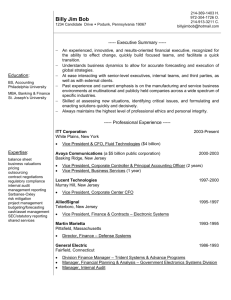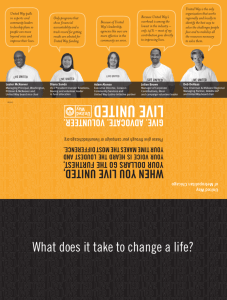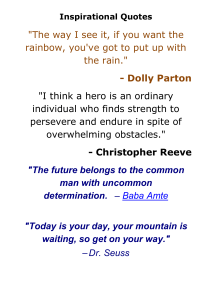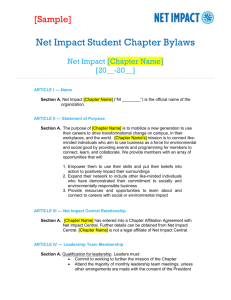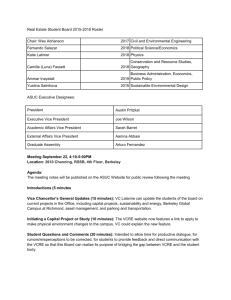COS206 Capstone Project
advertisement
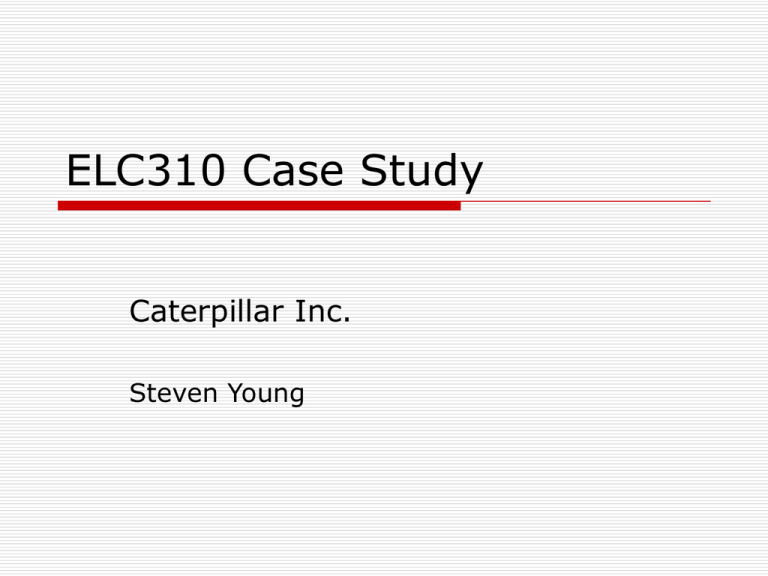
ELC310 Case Study Caterpillar Inc. Steven Young Company Overview Caterpillar Inc. is the world's leading manufacturer of farm and construction machinery, including trucks, tractors, excavators, and graders. Caterpillar also manufactures both gas and diesel engines which are used in Caterpillar machinery and other equipment. The company has 50 production facilities in the United States and 60 production facilities abroad, and has over 200 dealers in 178 countries. Forty four percent of Caterpillars business is in the US and 56 % abroad. This company is in the Industrial Goods sector, in the Farm & Construction Machinery Industry History! 1863 - Charles Holt established C.H. Holt & Co., which imported hardwood lumber. His, brothers, William, Frank, and Benjamin, become partners in the Holt Brothers business. Milestones patented first grain cleaner in 1871 1886, the Holt offered the Link Belt Combined Harvester – link-belt hauling 100,000 lbs. of freight at about 3 mph. 1906 - first caterpillar-style tractor 1983 - lost money for the first time in over 50 years. 1985 - to compete with Komatsu, shifting facilities and functions overseas from Peoria, Illinois to Scotland and Japan. 1985 - $600 million factory modernization investment, permanently reduceding manufacturing labor force 1990 - profit centers w/ autonomy 1991 - Cat UAW workers engaged in a 5 month (wages and benefits) 1992 - hard ball with the UAW, filing suit to make illegal the UAW’s practice of requiring companies to pay salaries and benefits of UAW full time officials declared illegal under the Labor Management Relations Act. Most of the 12,500 striking Cat workers returned to work without a contract 1996 - Federal health inspectors refused access Caterpillar plant in York, Pennsylvania 1998 - Refocused on global diversification (50% of sales internation) while U.S. market flourishing w/average sales growth of 13% for the previous 5 years Management Principal Divisions: Asia-Pacific Division Building Construction Products Division Compact Power Systems Division Europe, Africa & Middle East Product Development & Operations Division Global Mining Division Large Power Systems Division Latin America Division Mining & Construction Equipment Division North American Commercial Division Track-Type Tractors Division Wheel Loaders & Excavators Division. Management The company officers, many of which earn salaries from 1 – 2.6M annually, include: James W. Owens - Chief Executive Officer, Chairman of the Board David B. Burritt - Vice President, Chief Financial Officer John S. Heller - Vice President, Chief Information Officer Sidney C. Banwart - Vice President, Human Resources Michael J. Baunton - Vice President James S. Beard - Vice President Richard A. Benson - Vice President Rodney L. Bussell - Vice President Thomas A. Gales - Vice President Donald M. Ings - Vice President Stuart L. Levenick - Group Vice President Robert R. Macier - Vice President Daniel M. Murphy - Vice President, Purchasing Douglas R. Oberhelman - Group Vice President Gerald Palmer - Vice President Edward J. Rapp - Vice President Gary A. Stroup - Vice President Gerard R. Vittecoq - Group Vice President Mary H. Bell - Vice President Joshua I. Smith - Director Charles D. Powell - Director Gordon R. Parker - Director William A. Osborn - Director Peter A. Magowan - Director David R. Goode - Director Juan Gallardo - Director Christopher C. Curfman - Managing Director Robert T. Williams - Managing Director William J. Rohner - Managing Director Paolo Fellin - Vice President Richard P. Lavin - Vice President Rodney C. Beeler - Vice President, Marketing Mark R. Pflederer - Vice President Competitors Chief competitors of Caterpillar include Komatsu Ltd., Case/New Holland, Deere & Company, Terex Corporation, Ingersoll-Rand Company Limited, B Volvo, Hitachi Construction Machinery Co., Ltd., J C Bamford Excavators Ltd., and Cummins, Inc. Capital Employees Quarterly Revenue Growth Revenue CAT 40.11B 76,920 Case/New Holland 2.37B 25,700 Volvo 18.53B 81,080 Industry (includes Deere and Komatsu) 971.73M 3.06K 17.20% 35.21B -0.40% 12.54B 13.60% 29.05B 22.60% 592.72M Marketing Model Effective in thinking “out of the box” relative to its core manufacturing business, by identifying and pursuing opportunities including financial services, and used offerings. Caterpillar recognized that customer experience prior-to, during, and after the buying process was perhaps more important than the product itself. The internet was pivotal in making value added offerings to address these needs. CatUsed.com - marketing Caterpillar-inspected used equipment and parts. Sixty-five Cat dealers list used equipment and parts, offering about 9,000 machines and 1.25 million used parts for sale. Financial services yielded a 12.4% profit in 2000 compared to 8.8 % on machinery. Industry trends during the 1990s; Business services in the U.S. increased 9 % annually industrial machinery sales increased <5 % per year. A network combining all parts, service, and rentals nationwide under one account with one statement The ability to view itemized transactions, track payments, and pay securely online; and Purchasing flexibility for all customers through various plans. Cat AccessAccount, a card-less, revolving charge account enabling payment for parts, service and rentals in the U. S. Customer benefits including: Value Bubble Attracting: Caterpillar accomplishes this by capitalizing on its excellent product reputation, by international marketing efforts, and innovation in product development and product offerings. Engaging (Building Loyalty): Caterpillar accomplishes this by offering quality innovative products and services. Retaining (Strengthening the Relationship): Caterpillar does this by producing reliable products, and offering exemplary customer services. Learning (Building the Database): Caterpillar has invested in increasing efficiency and facilitating customer experience by combining databases for services, parts, and products. Relating (Data-Driven Interactions): Caterpillar’s linked databases increase efficiency, and improve customer experience by facilitating product purchase, support, and financing. Questions for the Audience? Do you feel that Caterpillar’s hard-ball stance with labor has negatively affected its business? Do you believe that Caterpillar’s success will continue into the foreseeable future? What, if any, are international threats to Caterpillar’s ability to do business internationally? Questions for me? Thanks for your time! Merry Christmas and Happy Holidays


